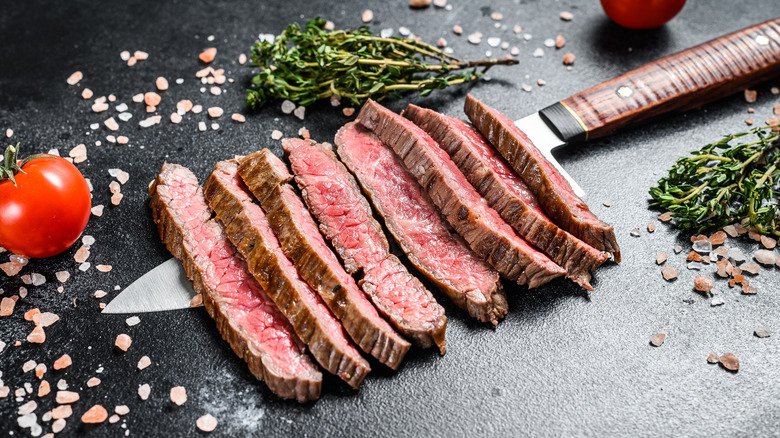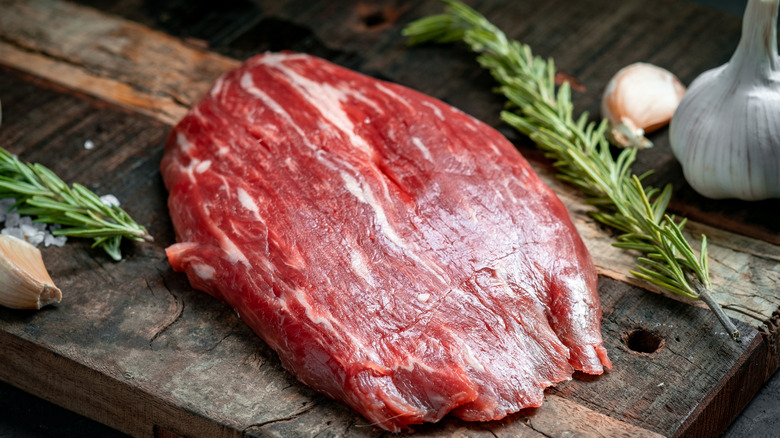Why Cutting Flank Steak Against The Grain Is So Important
If you haven't been cooking flank steak, you shouldn't pass on this piece of meat. Flank steak can be a great addition to a dish, but you have to know how to properly prepare it. According to The Spruce Eats, flank steak is a lean cut of beef from the belly muscles of a cow. Because it contains very little fat, flank steak tends towards toughness and dryness. This can be alleviated, though, by marinating the meat to help tenderize it as well as serving it medium rare (via My Chicago Steak).
Flank steak is a long, thin cut of meat that's typically cooked whole and then sliced up for serving. This last step, the slicing, is more important than you might realize, as cutting your flank steak properly is critical for ensuring that your meat turns out moist and juicy. As explained by Better Homes & Gardens, it's imperative that cooked (and rested!) flank steak be sliced against the grain, not with it, for slices that are tender and not uncomfortably chewy. Wondering why? It all comes down to the structure and texture of this piece of meat.
Your cutting technique is important
So what is "the grain" of meat, anyway? As explained by Serious Eats, this term refers to the pattern of muscle fibers. In some cuts of meat such as New York strip, ribeye, and tenderloin, these fibers are thin and easy to cut through. But in other cuts of meat from parts of the animal that work harder than other muscle groups, such as skirt, hanger, and flank steak, these long muscle fibers are thicker and more defined.
Serious Eats explains that due to their job controlling muscle movement in the living animal, these fibers are very tough. If you were to grab a piece of flank steak, the outlet writes, and try to pull it apart with (or in the direction of) the grain, you won't make much progress — the meat will resist. If, on the other hand, you pulled that same piece of meat against its grain, the fibers would give. And that is why it's so important to cut flank and similar steak cuts against the grain: the knife will shorten those muscle fibers in every bite of meat, making them tender and easy to chew instead of tough and resistant.
To cut flank steak against the grain, simply identify the grain pattern once the meat is cooked and rested. Then, use a sharp knife to slice the meat perpendicular to that pattern — leaving you with perfectly tender slices of flank.

